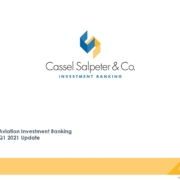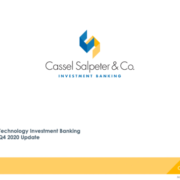Business Travel Plans Could Leave Hotels High and Dry
By Erik Sherman
April 29, 2021
CRE companies in the office space market are getting accustomed to news of space cutbacks, like the 20% one in 2021 HSBC Holdings Chief Financial Officer Ewen Stevenson mentioned in an interview with Bloomberg Television on Tuesday.
But it was the second plan Stevenson referred to that underscores problems for the hotel industry: a 50% reduction of past business travel expenses. Why send people on the road when a video call gets there so much faster? Klaus Kohlmayr, chief evangelist for hospitality industry revenue management company IDeaS, tells GlobeSt.com that business travel is “absolutely critical” for hotels.
“I would say about two-thirds of revenue comes from some sort of business travel related segment,” whether individual traveler, managed or unmanaged accounts, or conventions and meetings, he says.
The signs for business travel are mixed, with “the lucrative business routes, both domestic and international, that are usually the mainstay of the airlines route profitability,” being crushed, Joseph Smith, director of aviation services at investment banking firm Cassel Salpeter, tells GlobeSt.com. “Many airlines have tweaked their route system to accommodate the leisure traveler, which is leading the post-vaccine travel recovery. As a result, the surging leisure travel segment is currently far outstripping the business/commercial passenger revenues, flights, and mileage.”
While Smith expects “travel norms and business activities to substantially increase, leading to a substantial, healthy and sustainable recovery for the airlines and the overall aviation ecosystem,” that will take a few years. It’s a sign that hotels will continue to face challenges.
“I think there’s going to be certain parts of business travel that will start picking up now,” Bruce Rosenberg, president of HotelPlanner, tells GlobeSt.com. “I think the first part will be sales calls, people going out there, mixing it up with customers. The expectations that you’re going to be meeting in person will return faster.” Even meetings have started to come back to life, though major events like the annual tech CES show could take another year or two.
“The last part of business travel that will be slow to come back will be intra-company trips,” in which executives and employees visit other facilities of their corporations, Rosenberg adds. “That’s going to take a while to come back, and that’s probably 25%, 30% of total travel trips.”
As of early 2021, hotel room demand was still down 32%, according to data from Oxford Tourism Economics. Depending on geographic region, average occupancy rates across the U.S., Europe, China, and the rest of Asia Pacific ran between 20% and 50%.
The loss of business travel is particularly worrying, as it’s traditionally one of the highest rate segments, Kohlmayr says.
According to commercial real estate marketplace CrowdStreet, overall improvement has begun to show strong momentum, but “while good news currently abounds for resurging demand in the hospitality sector, true recovery at the operating level is still likely months, if not a year away.”
Click here to read the full article.
Cassel Salpeter & Co. Secures Debt Financing For Plantation Boat Mart & Marina, Inc.
Cassel Salpeter & Co., an independent investment banking firm that provides advice to middle market and emerging growth companies in the U.S. and worldwide, represented Plantation Boat Mart & Marina, Inc. (“Plantation”) in securing senior debt financing from Synovus Bank. The financing will support various recapitalization and growth initiatives.
Plantation Boat Mart & Marina, Inc. operates as an independent, family owned boat dealership and marina. Founded in 1996 and based in Tavernier, Florida, Plantation is a dealer for Sea Hunt Boats, Deep Impact Boats, Invincible Boats, and Blackwater Boats. They also offer an excellent selection of quality pre-owned center console boats and yachts. Plantation’s parts and service department continues to grow and is now one of the most complete and largest departments in South Florida, with over 40,000 square feet under-roof.
Plantation is proud to have achieved both Top 100 Dealer in North America and the National Marine Manufacturers Association’s 5-Star Certified Dealership status. Plantation is not just a boat dealership—but a way of life. The connectivity to their customers is long-standing and essential, as they return to Plantation year after year, purchase after purchase, to support their passionate lifestyle for boating.
“Cassel Salpeter has years of experience helping middle-market businesses like Plantation raise capital, complete recapitalizations, and mergers and acquisitions,” said Cassel Salpeter Director Joseph “Joey” Smith, who led the assignment. In this instance, we helped Plantation in evaluating its financing options and assisted throughout the due diligence and closing process. Plantation’s Founder Elias De la Torre, Jr. added: “We are grateful for the expert guidance that Cassel Salpeter provided in connection with the transaction.”
Robert Gardana, Esq., Aldo Lastra, Jr. CPA, and Anita Aedo, Senior Vice President & Director of Middle-Market Banking at Synovus Bank, also worked diligently to expedite the transaction’s closing.
About Cassel Salpeter & Co., LLC
Cassel Salpeter & Co. is an investment banking firm with professionals who have more than forty years of financial experience. They deliver smart, straightforward advisory services to middle-market companies across America. With a thorough understanding of their clients’ industries and a keen sense of the economy, the Cassel Salpeter team provides independent, timely advice so clients can capitalize on a rapidly changing global environment. Headquartered in Miami, Florida, Cassel Salpeter is led by James Cassel and Scott Salpeter. Member FINRA and SIPC.
Inflation Worries? Here’s What A Business Needs To Do
By Erik Sherman
April 9, 2021
Worried about all the predictions of inflation and how you’ll manage?
Relax, you could be doing business in Ukraine, with its dizzying changes
from one year to the next.
In comparison, inflation over the last 30 years in the U.S. has been
laughably small.
“The new generation of business owners [in the U.S. have] never
experienced inflation,” said Henry Shterenberg, CEO of World Trade
Center Kyiv in Ukraine. “Ukraine is much better prepared for financial
shocks,” like supply chain disruptions, currency devaluation, price hikes in
markets, labor costs, and more.
And yet, go back an additional decade and you find a top inflation rate of
13.5% in 1980 in the U.S. It doesn’t take 50% per month hyperinflation to
upend business practice. Maybe it’s time for executives to review the skills
necessary to steady a business through turbulent times. Just in case.
Inflated inflation worries?
After the $1.9 trillion pandemic relief bill, some economists are pounding
the inflation drums. So much money in the system will cause inflation and
the Federal Reserve is complacent, former Treasury Secretary Lawrence
Summers argues on Twitter and in ongoing debates with other
economists.
Economic predictions are notoriously unreliable, especially as different
people with illustrious pedigrees can’t seem to agree. For example, after
the roughly $2.5 trillion spent on the 2017 Tax Cuts and Jobs Act, inflation
didn’t jump higher. Why should it now?
High inflation may not seem likely, but it is possible—especially when you
consider how one industry can experience inflationary shocks that don’t
perturb the rest of the country, and can still drive higher costs, supply
chain disruptions, and labor shortages.
And yet, a business should be cautious when rolling the dice on strategy,
as inflation can be tricky. Executives should always be ready to hedge
their bets when trying to manage macroeconomic change.
Individual inflation
When the government calculates and discusses inflation as a single
number, the figure includes samplings of many different types of
purchases over multiple geographic areas. The rate at which expenses rise
for one person or company may not be the same as that for another
because the choice of purchases is different.
Michael Alexis, CEO of virtual team-building activities company
Teambuilding, emailed Zenger News to say that over the last decade he’s
also done restaurant industry business in Beijing. China’s inflation rate in
the last ten years has run mostly around 2%, with exceptions in 2011
(6%) and 2020 (5.5%). However, the specifics for restaurants in the
country’s capital has been far different. He called the industry’s
inflationary pressures “massive.”
“For example, at the end of a five-year lease your rent may double or even
triple,” Alexis wrote. “Similarly, the cost of staff and labor grows
substantially year over year.” So did food costs. He thought that the
pressures “may have been more isolated to Beijing by specific policies,”
such as migrant labor restrictions. Other industries, however, could have
continued without concern.
“From a firm’s perspective, why do they care about inflation?” William
Branch, a professor of economics and department chair at the University
of California, Irvine, told Zenger. “They just would care about it if there’s
some mismatch in how their costs are increasing and how their revenue is
increasing.” When everything changes at the same rate, the effect is
unimportant because margins and profits remain steady.
Then again, a mismatch in degree or a time-lapse in which cost escalations
run ahead of revenue can cause problems. So can localized demand for
goods or services, whether in a region or specific industry.
“The worst inflation that I ever experienced, and it wasn’t the normal kind
of inflation that you’d think of, was during the dot com era,” said Ray Zinn,
who was a semiconductor company CEO for 37 years in Silicon Valley.
“Anytime you have a belief that there’s a lack of inventory, that’s when
inflation starts.” Companies were “double ordering, triple ordering,” and
that drove prices sky-high as many assumed the dot com boom would
continue indefinitely “People overreact on the upside and they overreact
on the downside,” he said.
The effect can be seen right now in the lack of chip supply that is
hindering automobile manufacturing. Low inventory levels drive up costs
for a form of inflation that might not affect a clothing retailer or
manufacturer of mechanical fasteners.
Managing inflation
The first step in managing inflation for a business is to forecast what
might happen. “You have to predict how long that’s going to last, how
long will this inflation go,” Zinn said. There is risk in making the wrong
forecast but worse in not forecasting at all. In the latter case, executives
will continue to chase changing conditions and always be left behind for a
guarantee of more challenging times.
If inflation is likely to be ongoing and not a momentary bubble for a
quarter or two, then it’s time to consider how to hedge. One way is to do
any necessary borrowing early on because the value of the dollar drops,
so that debt becomes cheaper while inflation is higher.
“Tie in costs with longer-term contracts if you can do it,” said James
Cassel, chairman and co-founder of investment banking firm Cassel
Salpeter. The effect is the same as early borrowing—locking in pricing
that will drop in real terms after inflation. “Look to productivity, ways to
use technology to bring your costs down. And then be very careful in
watching your pricing sensitivity.” With enough price elasticity, a company
can raise prices to protect margins without an equally offsetting drop in
demand. Without elasticity, it could become necessary to find ways to cut
costs.
Ironically, for many businesses, a slight rise in the inflation rate—to 3% or
4%, for example—could be useful. “You need to keep an eye on what your
competitors are doing,” said Alessandro Rebucci, an associate professor of
finance at the Johns Hopkins Carey Business School. Now that we’re
talking about everyone raising prices, it will be much easier for individual
firms to raise their prices a little bit without losing demand.”
Companies also typically negotiate wage and supplier agreements across
multiple quarters, with expenses set in advance. “A little bit of inflation is
going to lower their [real] costs,” Rebucci said.
But if it’s necessary to manage inflation, be careful about the steps you
take. Keesjan Engelen, CEO of Taiwan-based electronics design firm
Titoma, mentioned in an email that he had worked for another firm in the
1990s during an inflation spike. Long-range vendor contracts and
eliminating non-vital costs “allowed us to minimize the price increase that
was sure to come.”
Not all companies were careful enough. “Many businesses sacrifice quality
while cutting costs and meet their end as a result,” Engelen warned.
Click here to read the full article.
Click here to read the full PDF.

Get In Touch
Cassel Salpeter & Co.
801 Brickell Avenue,
Suite 1900
Miami, FL 33131
(305) 438-7700
Stay Informed
Sign up today for insights and growth strategies.
Subscribe Now




